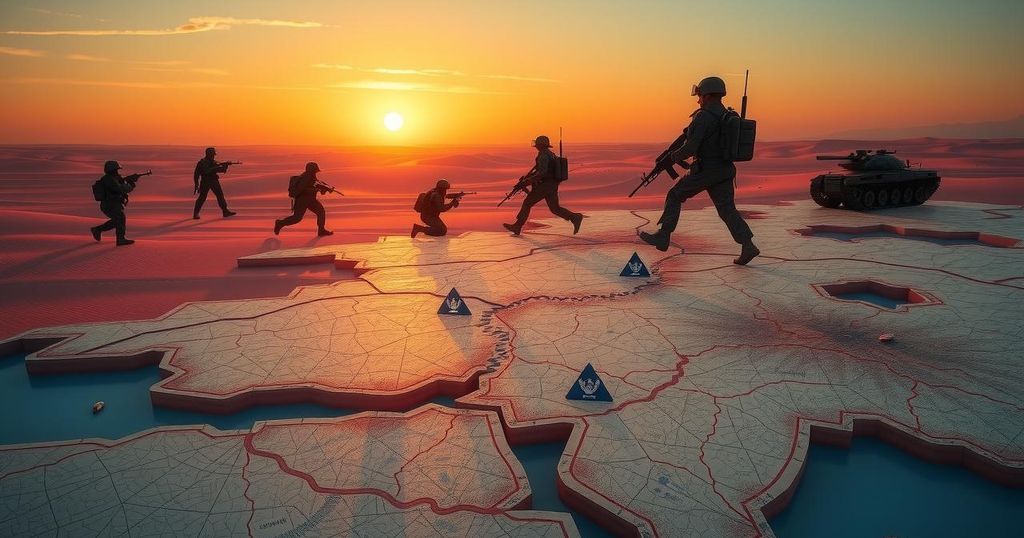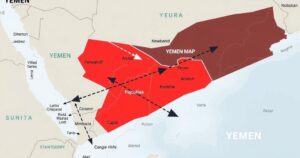Sudanese Army’s Strategic Gains in 2025: A Turning Point in the Conflict

A new report by African Narratives for Strategic Studies outlines the Sudanese army’s strategic military gains in early 2025. The report details significant territorial recoveries, including Wad Madani and Khartoum Bahri. While these advances present a potential shift in the conflict’s dynamics, severe humanitarian issues persist, raising questions about the future trajectory of the war.
A recent report, produced by African Narratives for Strategic Studies, provides an analysis of the Sudanese army’s recent advances in early 2025, which suggest possible shifts in the conflict’s dynamics. The report highlights the reclaiming of key territories by the army, which may influence the crisis’s trajectory moving forward.
African Narratives for Strategic Studies is a Pan-African policy research organization dedicated to enhancing global comprehension of Africa and tackling its most urgent issues. The organization focuses on democracy, security, energy, economic development, and human rights, striving to elevate African perspectives in meaningful discussions and foster sustainable progress.
Titled “Military Situation Assessment in Sudan 2025” and authored by Political Science Researcher Ahmed Gamal El Sayyad, the report characterizes the severe humanitarian consequences of the ongoing conflict, which has displaced millions. Nonetheless, it emphasizes recent military successes, particularly the army’s recovery of strategically significant locations, which it outlines in detail.
Key locations reclaimed by the Sudanese army since the beginning of 2025 include:
– Wad Madani: A pivotal victory as the city, the capital of Al-Jazeera State, is economically and demographically crucial.
– Khartoum Bahri: The army successfully repelled Rapid Support Forces (RSF) militia in this area.
– Umm Rawaba: This North Kordofan city’s strategic importance was reinstated by the army’s efforts.
– Jelei Refinery: As Sudan’s largest oil refinery, its recapture marks a significant accomplishment for the military.
The report delves into various battles and military actions contributing to these territorial gains, including artillery strikes on RSF positions. Assistant Commander-in-Chief, Yasser Al-Atta, asserted that “Khartoum Bahri has become clean and free of rebellion, from the Jelei refinery in the north to the Mak Nimr Bridge in the south,” indicating the army’s confidence in establishing control over significant regions.
The analysis underscores the strategic implications of these victories, notably how control over Khartoum Bahri secures the River Nile State and mitigates threats to Omdurman. The army’s recovery of the Mak Nimr Bridge enhances accessibility to the Republican Palace and consolidates power in Al-Jazeera through the recapture of Wad Madani.
Despite these advances, the report acknowledges the persistent humanitarian crisis and the continuous threat posed by RSF. However, the Sudanese army’s recent gains bring crucial questions about the future of the conflict into focus.
Moreover, the report mentions that Abdel Fattah Al-Burhan, leader of the Sovereignty Council and commander of the Sudanese army, has expressed intentions to form a transitional government aimed at decisively overcoming the RSF. This ambition suggests a determined effort from the army to capitalize on recent successes.
Overall, this assessment offers valuable insights into the shifting dynamics of the Sudanese conflict, emphasizing the army’s recent military achievements. While these successes indicate a pivotal moment in the war, their potential to foster lasting peace remains uncertain. Furthermore, the international community must contemplate the ramifications of these developments when addressing the ongoing crisis in Sudan.
The conflict in Sudan has resulted in widespread devastation and displacement, creating a dire humanitarian situation. The ongoing struggle between the Sudanese army and the Rapid Support Forces has led to significant strategic battles, with both sides fighting for control of key locations. Understanding the current military landscape is essential for evaluating the conflict’s potential resolutions and implications for the region.
The report emphasizes the Sudanese army’s recent successes and their implications for the conflict’s future. Despite the advances made, the dire humanitarian conditions persist, and the threat from the RSF remains. Ultimately, the trajectory of peace in Sudan will depend heavily on the army’s ability to maintain control over the reclaimed territories and the international community’s response to the ongoing crisis.
Original Source: www.dailynewsegypt.com








